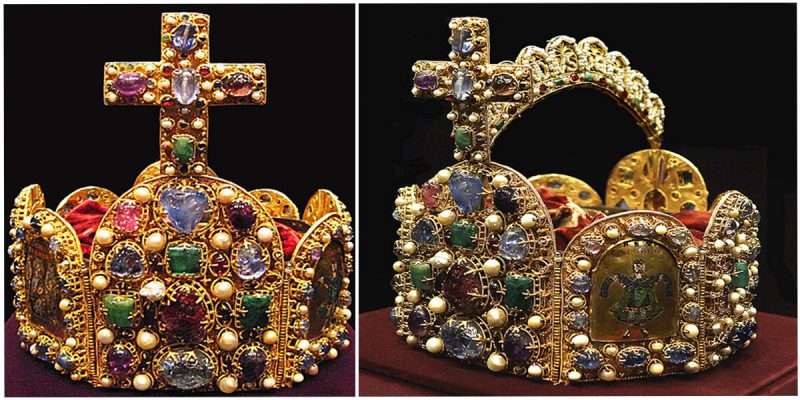The Imperial Crown of the Holy Roman Empire, also called Crown Of Charlemagne, was used for coronations of the King of the Romans and it was most likely made in Western Germany during the late 10th and early 11th century, probably during the reign of Otto the Great.
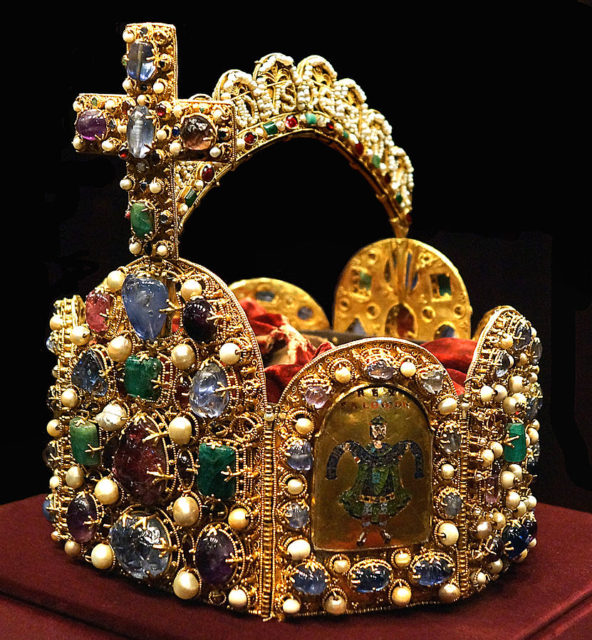
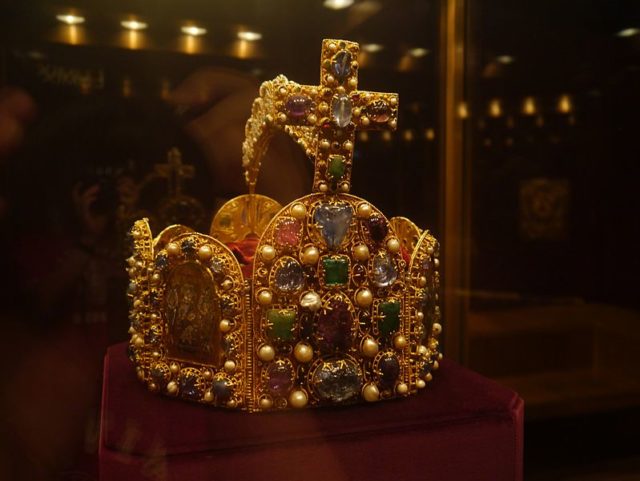
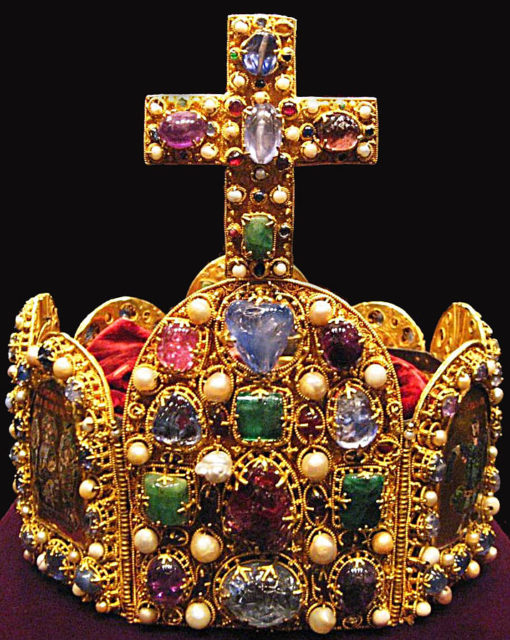
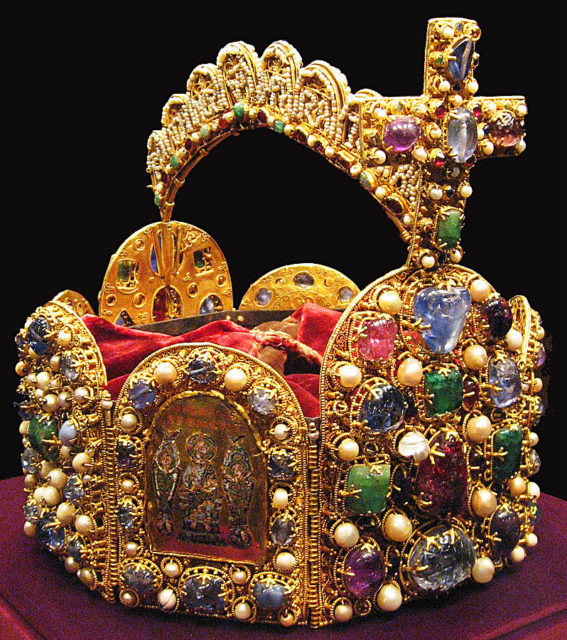
Like most modern crowns, this crown does not have a round shape, but an octagonal one and IT is made of eight round-topped plaques of gold, hinged together. The number eight refers to the number of perfection, claimed for the emperor as the royal number. It is ornamented with 144 precious stones (including sapphires, emeralds, and amethysts) polished into rounded shapes, as well as more than one hundred pearls.
During the coronation, the crown was given to the new king along with a scepter (created in the 14th century) and the Imperial Orb (created in the late 20th century).
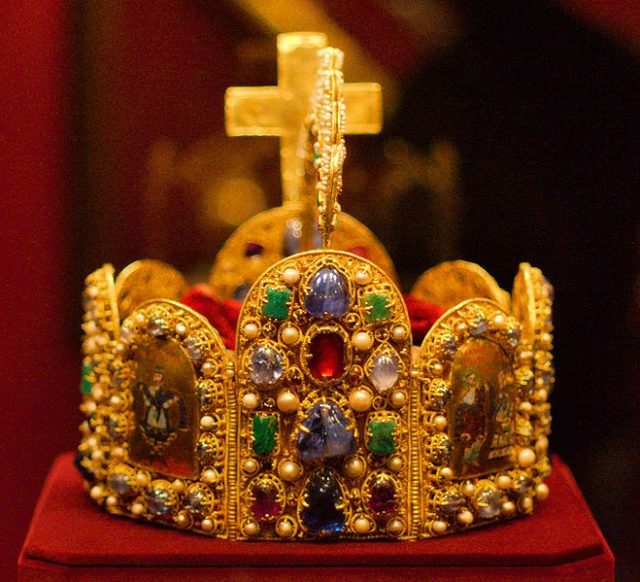
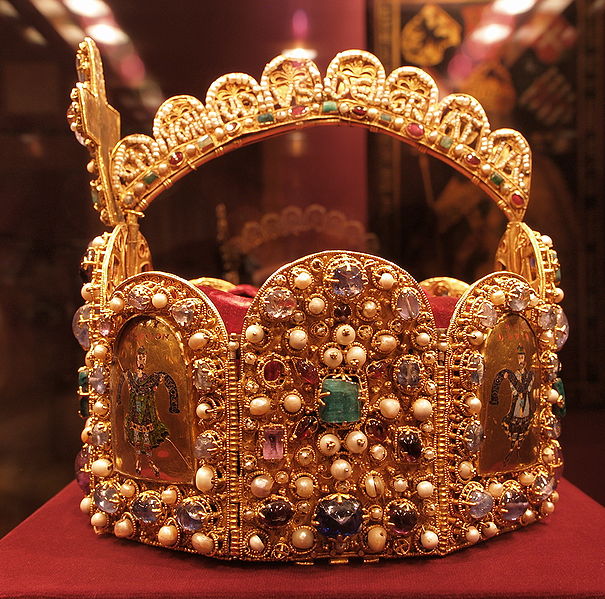
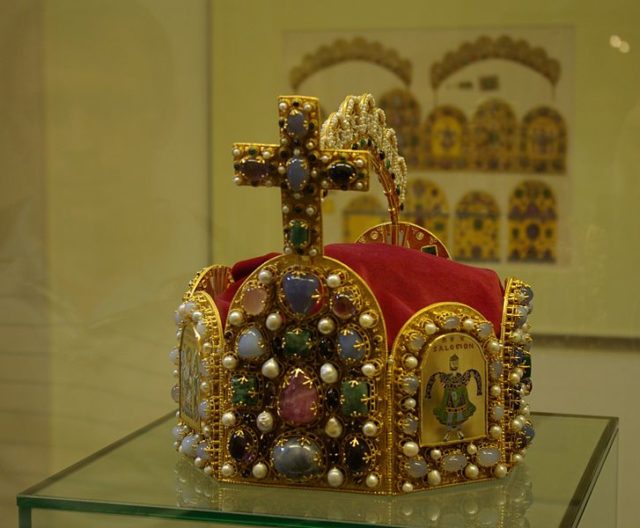
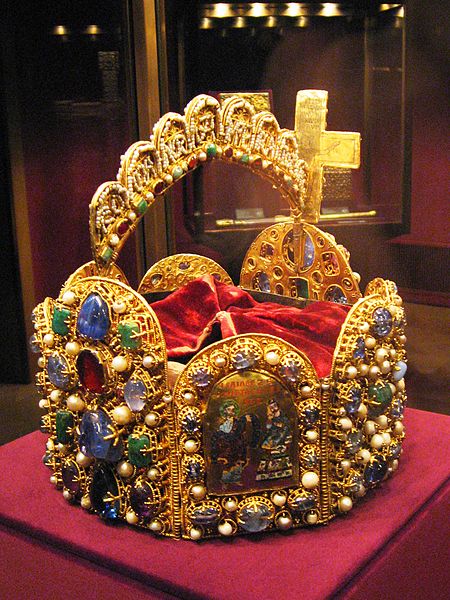
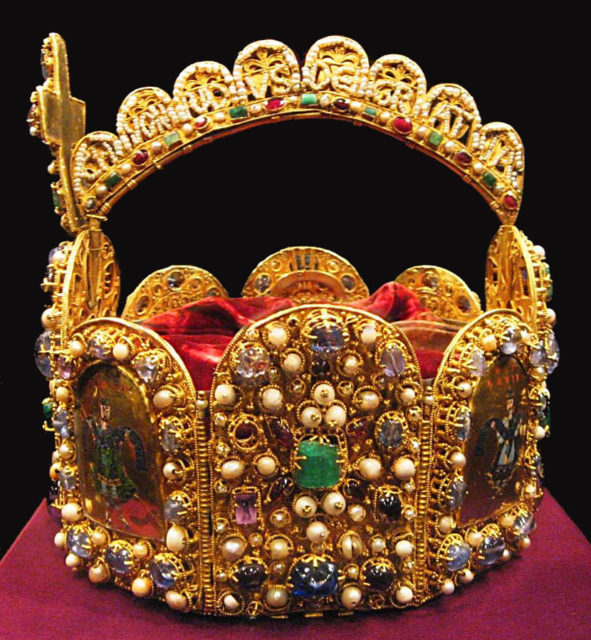
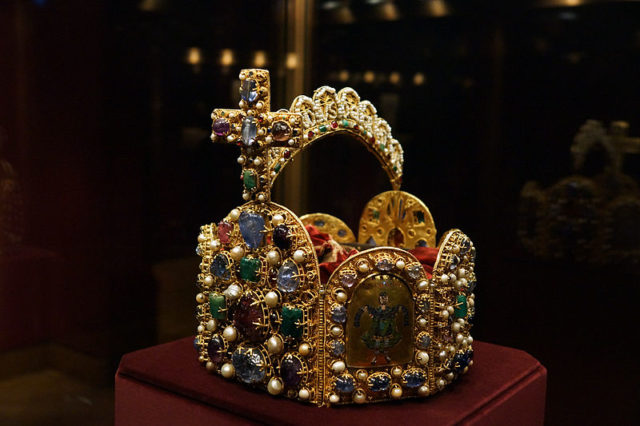
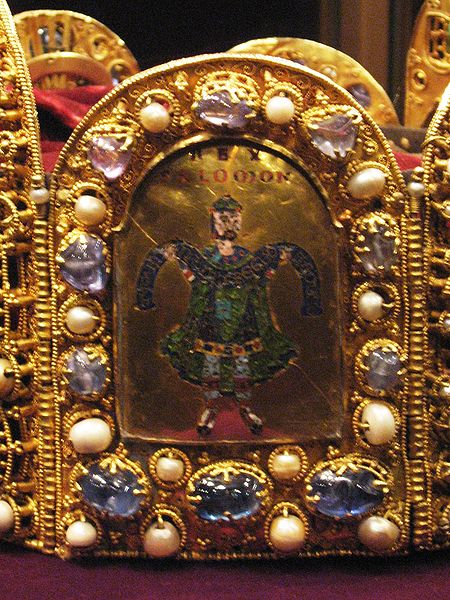
From the 15th century (1424), the Imperial Crown was kept in Nuremberg but in the 17th century (1796), when the French troops crossed the river, the last Holy Roman Emperor, Franz II, moved the crown to Regensburg to prevent it from falling into the hands of Napoleon and his troops.
Four years later, the crown was taken to Vienna. It is now preserved and exhibited in the national treasury in Vienna “until another Holy Roman Emperor of the German Nation.”
